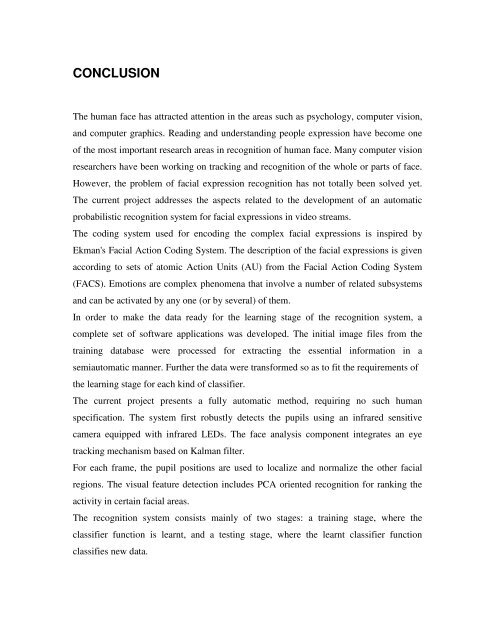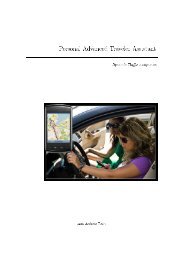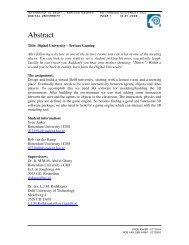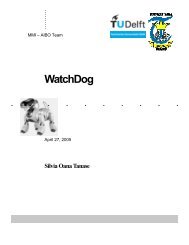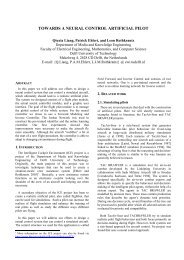Recognition of facial expressions - Knowledge Based Systems ...
Recognition of facial expressions - Knowledge Based Systems ...
Recognition of facial expressions - Knowledge Based Systems ...
You also want an ePaper? Increase the reach of your titles
YUMPU automatically turns print PDFs into web optimized ePapers that Google loves.
CONCLUSION<br />
The human face has attracted attention in the areas such as psychology, computer vision,<br />
and computer graphics. Reading and understanding people expression have become one<br />
<strong>of</strong> the most important research areas in recognition <strong>of</strong> human face. Many computer vision<br />
researchers have been working on tracking and recognition <strong>of</strong> the whole or parts <strong>of</strong> face.<br />
However, the problem <strong>of</strong> <strong>facial</strong> expression recognition has not totally been solved yet.<br />
The current project addresses the aspects related to the development <strong>of</strong> an automatic<br />
probabilistic recognition system for <strong>facial</strong> <strong>expressions</strong> in video streams.<br />
The coding system used for encoding the complex <strong>facial</strong> <strong>expressions</strong> is inspired by<br />
Ekman's Facial Action Coding System. The description <strong>of</strong> the <strong>facial</strong> <strong>expressions</strong> is given<br />
according to sets <strong>of</strong> atomic Action Units (AU) from the Facial Action Coding System<br />
(FACS). Emotions are complex phenomena that involve a number <strong>of</strong> related subsystems<br />
and can be activated by any one (or by several) <strong>of</strong> them.<br />
In order to make the data ready for the learning stage <strong>of</strong> the recognition system, a<br />
complete set <strong>of</strong> s<strong>of</strong>tware applications was developed. The initial image files from the<br />
training database were processed for extracting the essential information in a<br />
semiautomatic manner. Further the data were transformed so as to fit the requirements <strong>of</strong><br />
the learning stage for each kind <strong>of</strong> classifier.<br />
The current project presents a fully automatic method, requiring no such human<br />
specification. The system first robustly detects the pupils using an infrared sensitive<br />
camera equipped with infrared LEDs. The face analysis component integrates an eye<br />
tracking mechanism based on Kalman filter.<br />
For each frame, the pupil positions are used to localize and normalize the other <strong>facial</strong><br />
regions. The visual feature detection includes PCA oriented recognition for ranking the<br />
activity in certain <strong>facial</strong> areas.<br />
The recognition system consists mainly <strong>of</strong> two stages: a training stage, where the<br />
classifier function is learnt, and a testing stage, where the learnt classifier function<br />
classifies new data.


